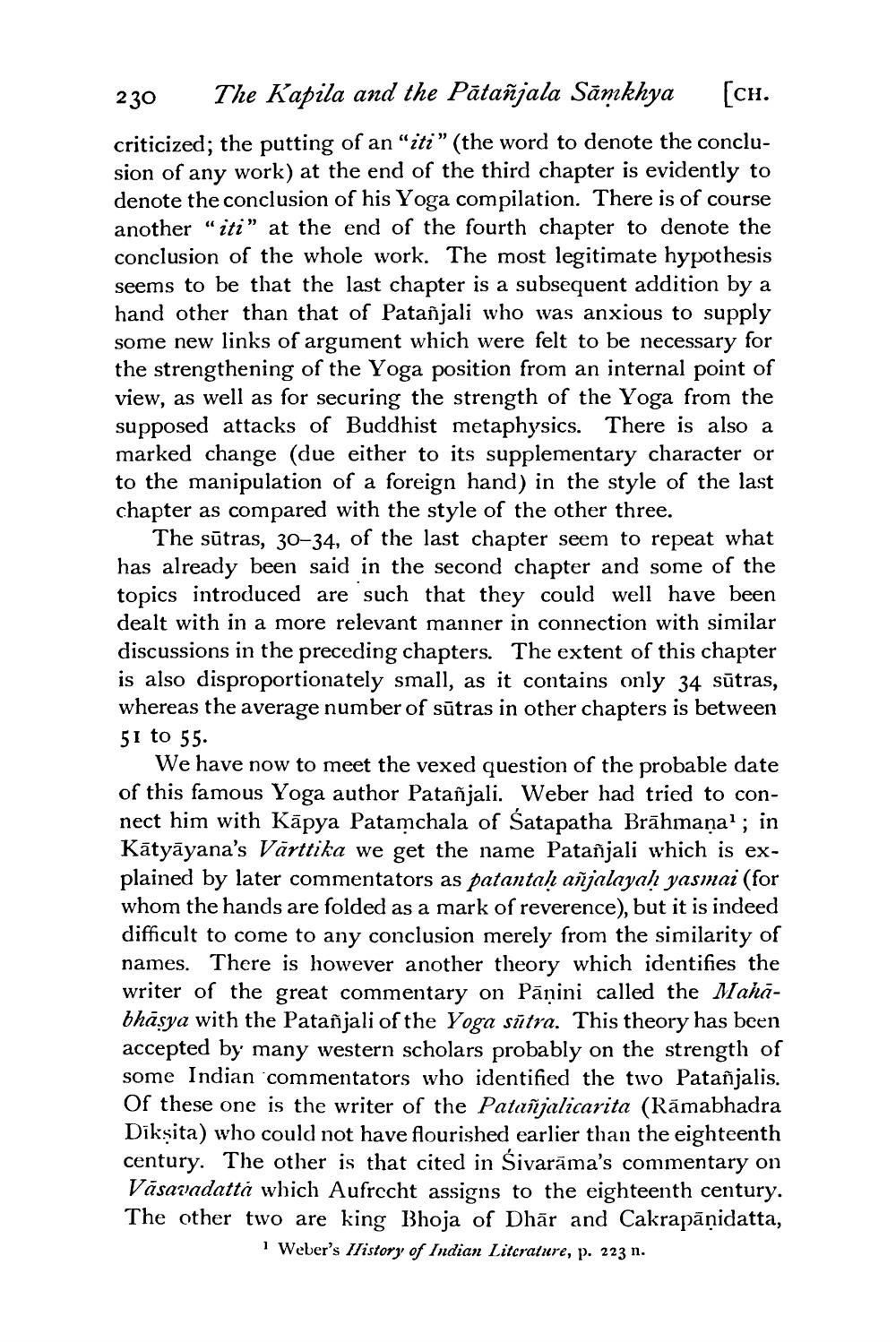________________
230 The Kapila and the Pātañjala Sāmkhya [ch. criticized; the putting of an "iti” (the word to denote the conclusion of any work) at the end of the third chapter is evidently to denote the conclusion of his Yoga compilation. There is of course another “iti” at the end of the fourth chapter to denote the conclusion of the whole work. The most legitimate hypothesis seems to be that the last chapter is a subsequent addition by a hand other than that of Patañjali who was anxious to supply some new links of argument which were felt to be necessary for the strengthening of the Yoga position from an internal point of view, as well as for securing the strength of the Yoga from the supposed attacks of Buddhist metaphysics. There is also a marked change (due either to its supplementary character or to the manipulation of a foreign hand) in the style of the last chapter as compared with the style of the other three.
The sūtras, 30-34, of the last chapter seem to repeat what has already been said in the second chapter and some of the topics introduced are such that they could well have been dealt with in a more relevant manner in connection with similar discussions in the preceding chapters. The extent of this chapter is also disproportionately small, as it contains only 34 sūtras, whereas the average number of sūtras in other chapters is between 51 to 55.
We have now to meet the vexed question of the probable date of this famous Yoga author Patañjali. Weber had tried to connect him with Kāpya Patamchala of Śatapatha Brāhmaṇa?; in Kātyāyana's Vārttika we get the name Patañjali which is explained by later commentators as patantah añjalayah yasmai (for whom the hands are folded as a mark of reverence), but it is indeed difficult to come to any conclusion merely from the similarity of names. There is however another theory which identifies the writer of the great commentary on Panini called the Mahabhāsya with the Patañjali of the Yoga sütra. This theory has been accepted by many western scholars probably on the strength of some Indian commentators who identified the two Patañjalis. Of these one is the writer of the Patanjalicarita (Rāmabhadra Diksita) who could not have flourished earlier than the eighteenth century. The other is that cited in Śivarāma's commentary on Vāsavadatta which Aufrecht assigns to the eighteenth century. The other two are king Bhoja of Dhār and Cakrapāņidatta,
1 Weber's Iristory of Indian Literature, p. 223 n.




